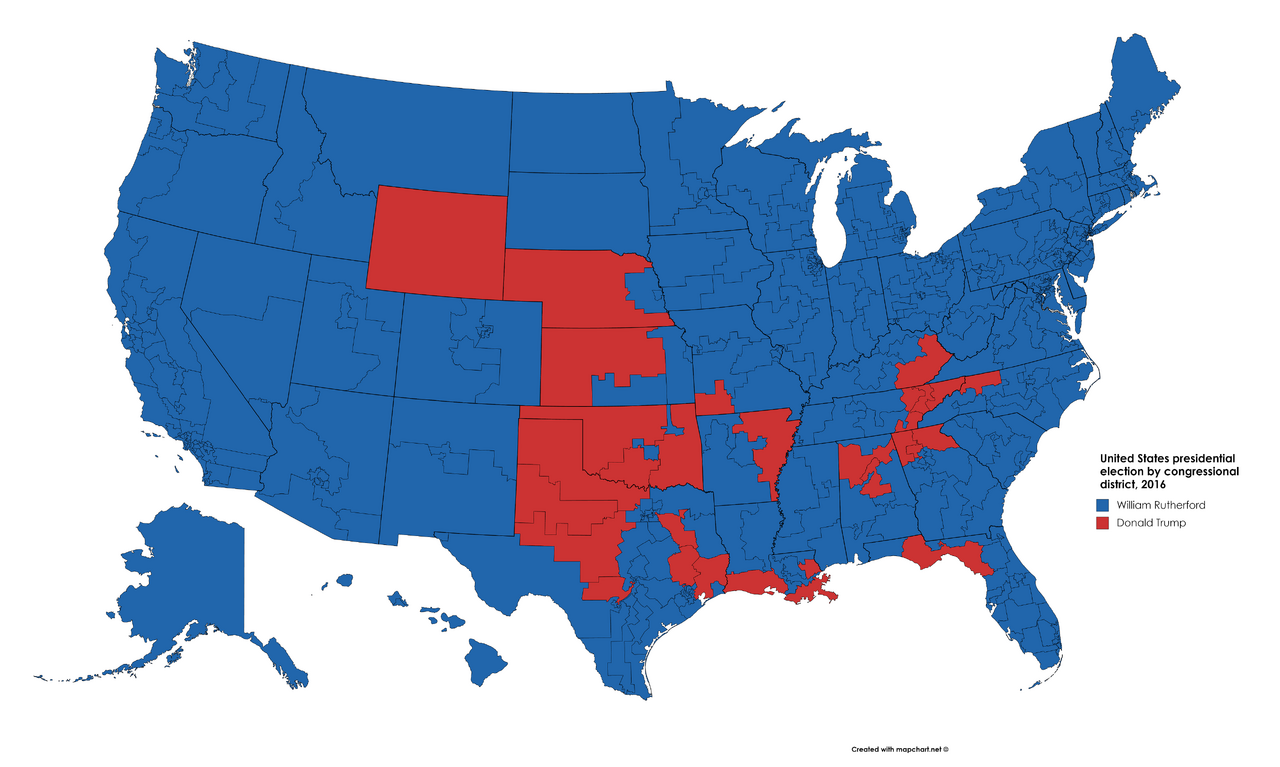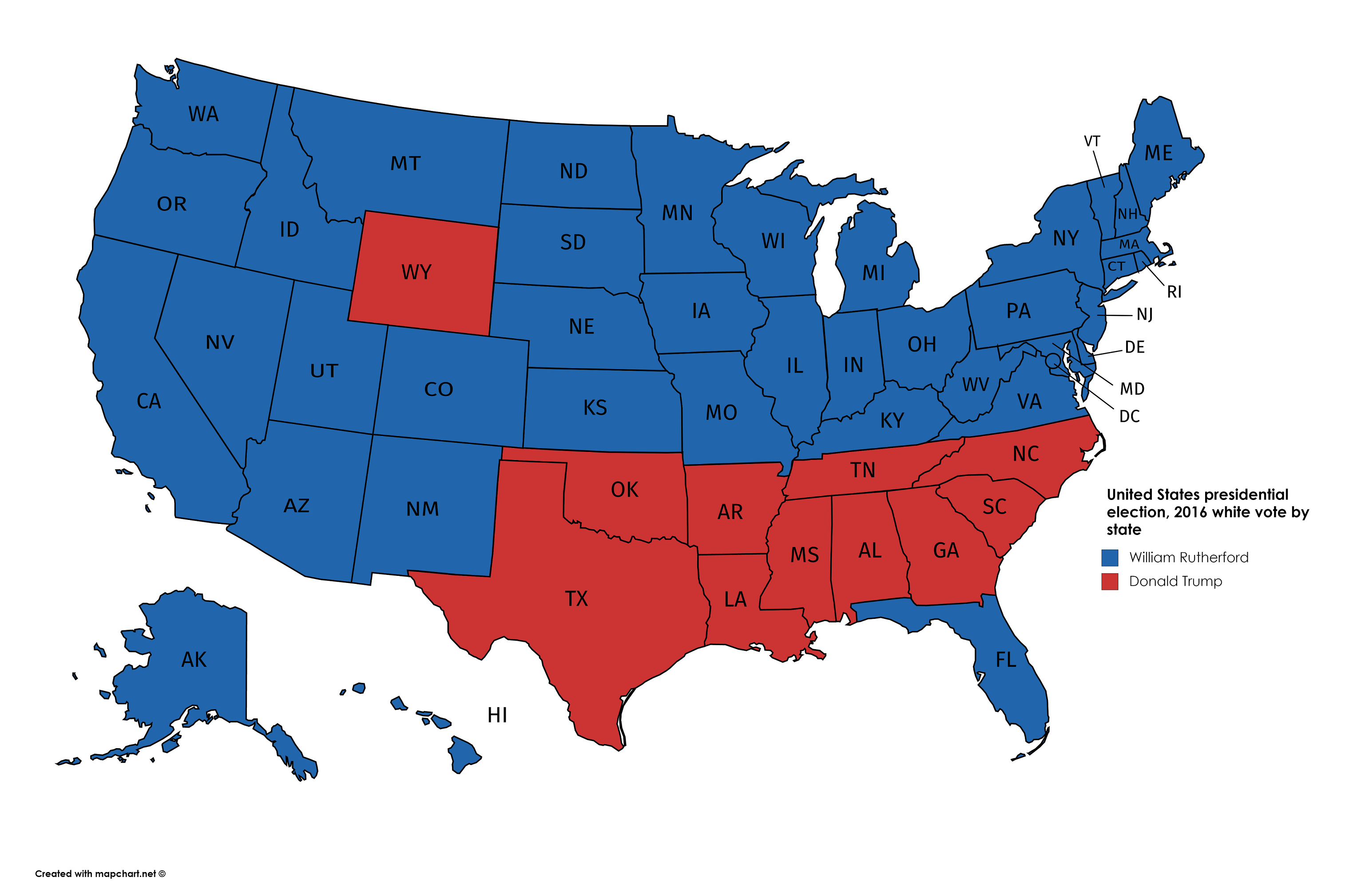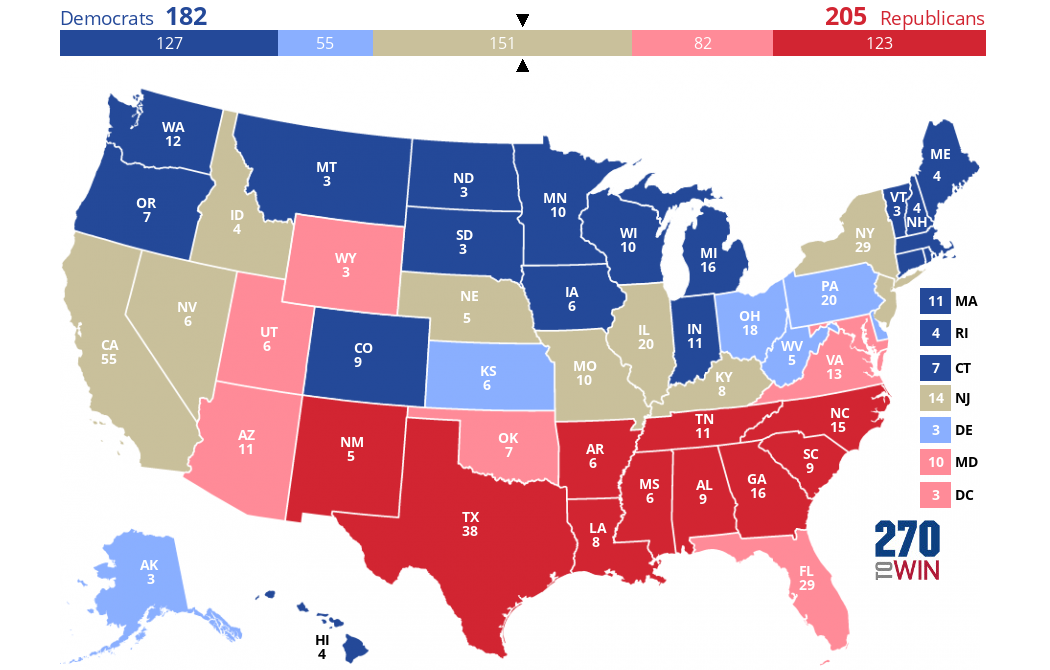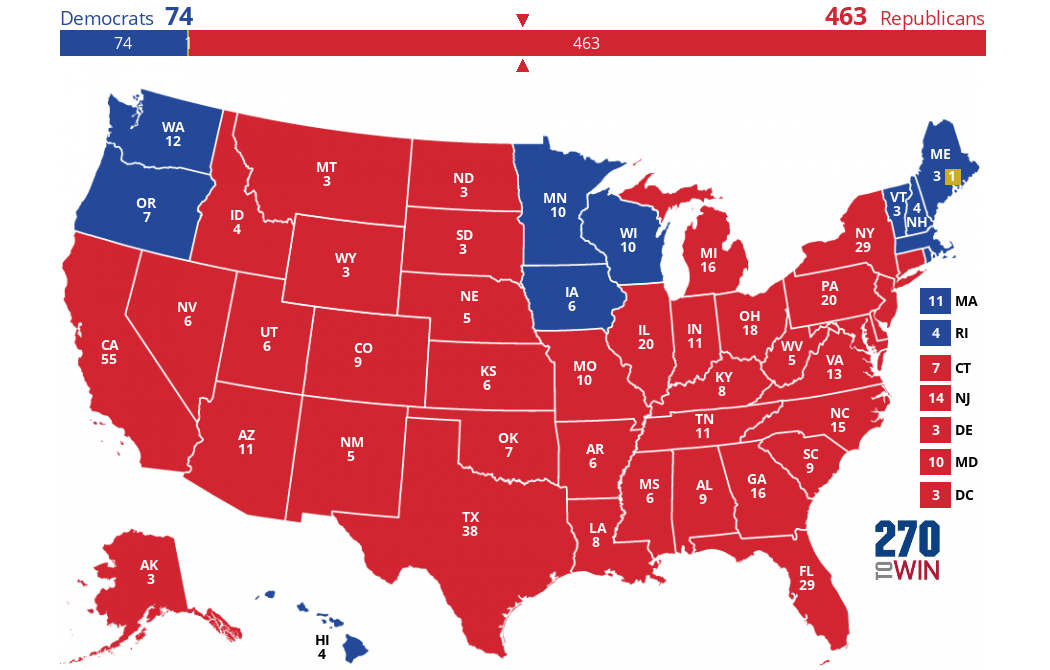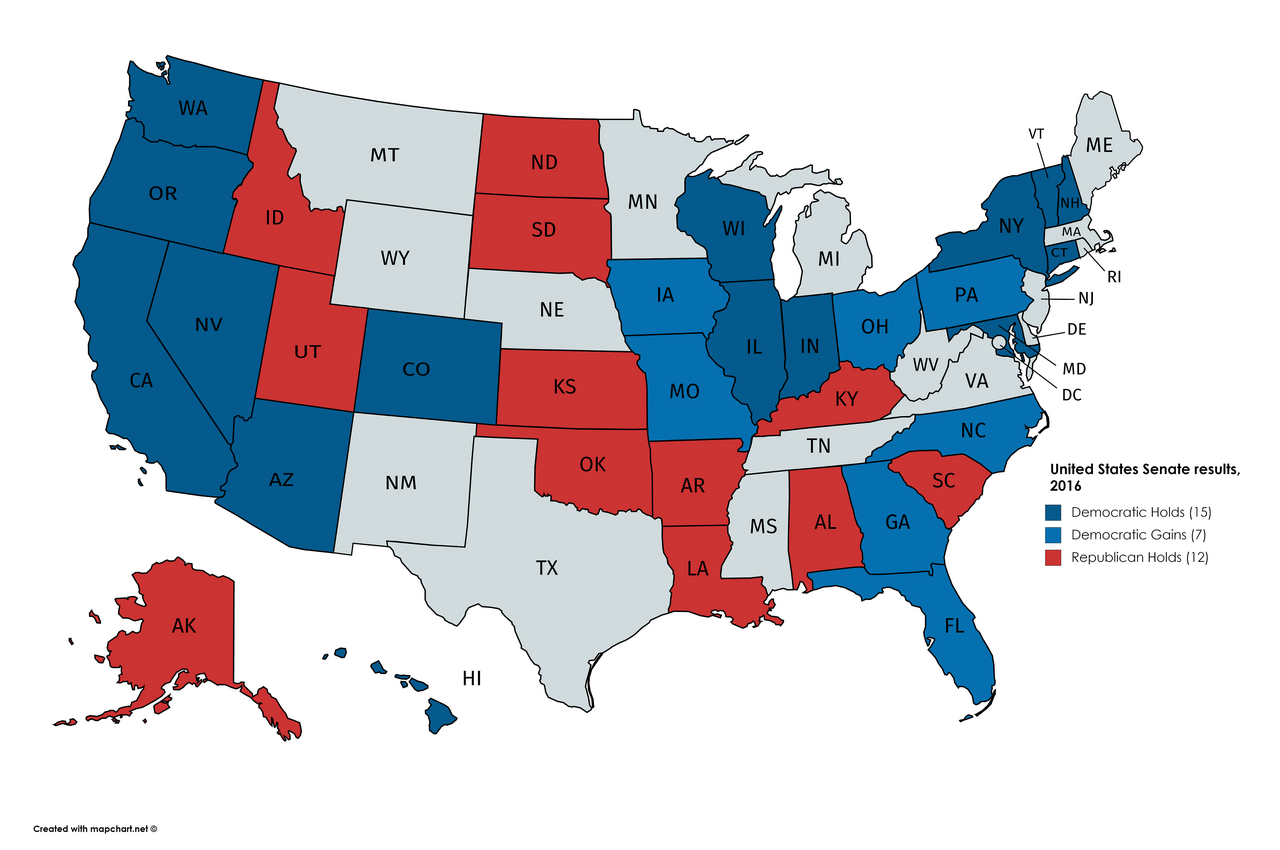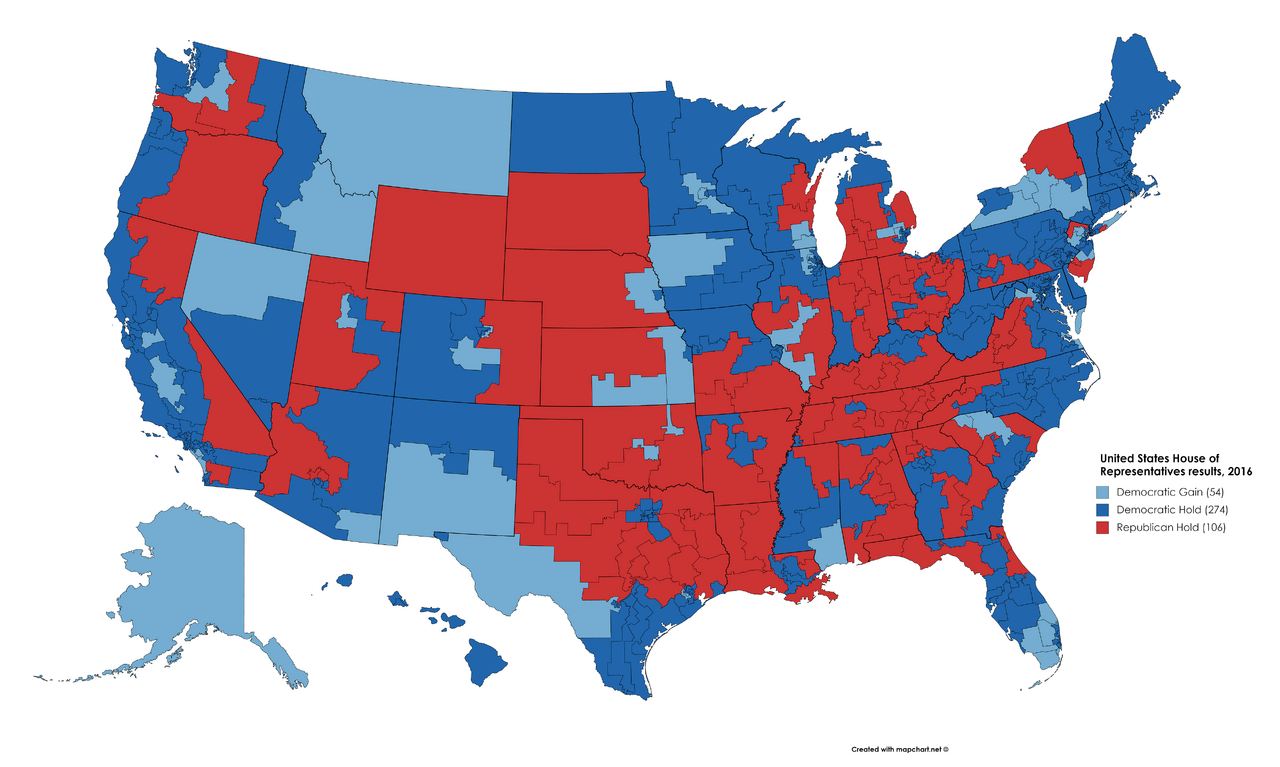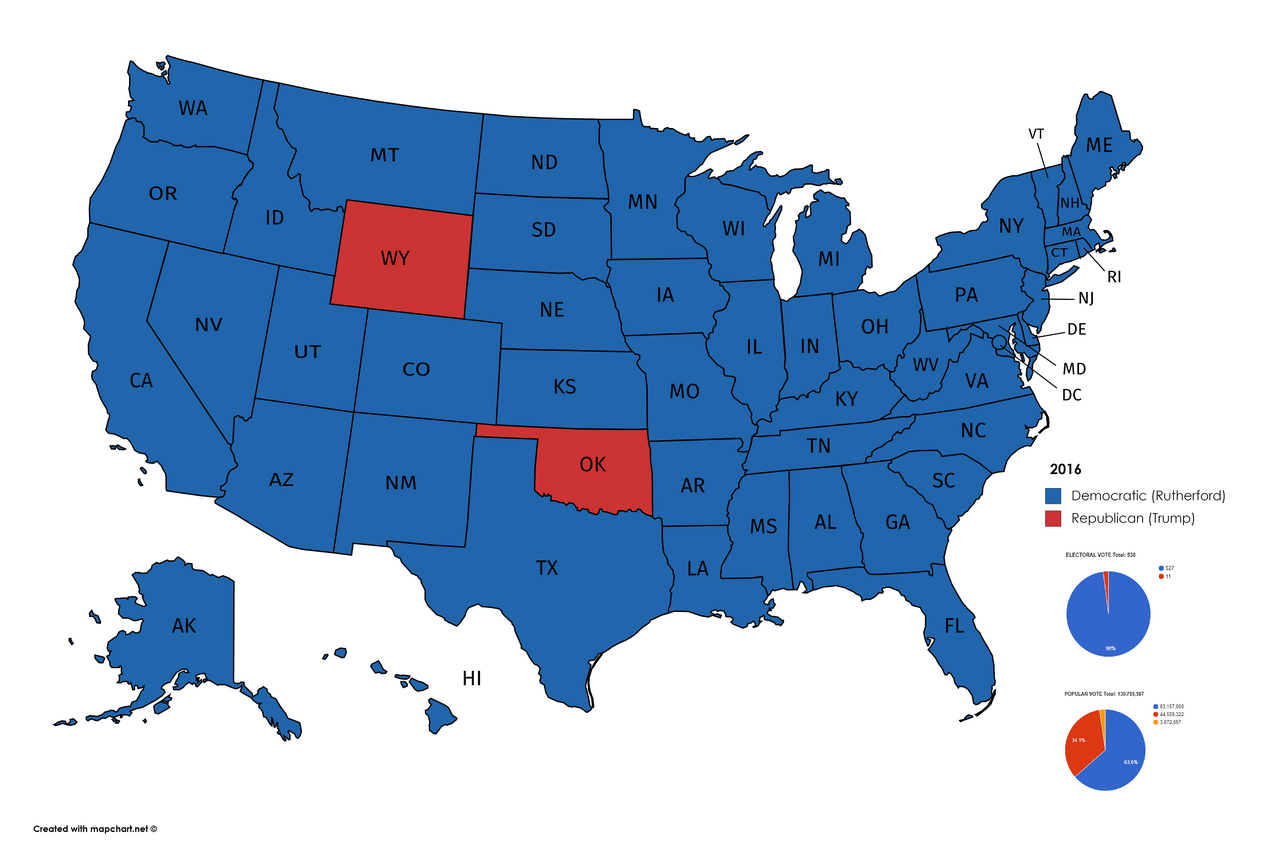The 7th Party System (2004-present)
This party system found its roots in the
Anti-Federal Decade (1992-2000), which saw a reversal of many of the federal government's powers that had been granted to it in the Cold War years. These years saw the ascension of
Anti-Federal Party, who burst into the national field with the landslide election of Senator
Jerry J. Mitchell. Mitchell's 4 years (he declined to run for a second term, probably because of his poor health) were prosperous, and his Vice President
Randall Beck naturally won in '96. However, Beck's administration suffered a series of domestic and international scandals, crippling the nascent party. The Democrats and Republicans bubbled back to power, forming new coherent ideologies by the 2004 election: the Democrats are anti-federalist and socially moderate, and the Republicans are pro-federalist and socially liberal.
In the years following 2004, a pattern has emerged. Hispanics and African Americans, who had benefitted from the government's assistance policies during the Cold War and saw a horrendous degradation of their communities during the Anti-Federal Decade, flocked to the pro-federal Republican Party. Meanwhile, College-Educated Whites and Asians, who prospered in the Anti-Federal Decades, swayed loyally to the Democratic Party. Non-College Educated Whites have been split down the middle by the two parties, but tend to lean Democratic.
Meanwhile, the disgraced Anti-Federalist Party lurks somewhere in far-right, ready to pounce on the Democratic Party and reclaim the libertarian vote for themselves.
The 7th Party System has resulted in lots of criticism being levied on the Electoral College. The nature of large swing states means that a candidate could skirt by with the bare minimum to win a majority in California or New York and effectively win the election, nullifying the loser's tremendous popular vote from that state that was slightly too little. Additionally, the nature of very small swing states means that a small popular vote win results in a relatively larger electoral reward--and because many of the central swing states are demographically similar, performing slightly better with the Non-College Educated White vote results in a large electoral advantage. This could be seen in the 2004 election when incumbent Democratic president
Howard Shaw won Illinois by .6% and won the election with 271 despite losing the popular vote 45%-47%, the 2008 election when Republican Governor
James Galindo won with 275 electoral votes despite losing the popular vote by .3%, and the 2012 election when President Galindo's .4% popular vote lead lost to Democratic Senator
Jen Kao's 318 electoral votes (Kao won both California and New York). Three elections in a row in which the winner did not win the popular vote has resulted in bipartisan support for a constitutional amendment, though the process has been slow.
Jen Kao's presidency was a disaster, with several domestic scandals and an embarrassing series of skirmishes with the rogue state of Libya. Meanwhile, the Anti-Federalists begin gaining moment on the right....
2016:
In 2016, Jen Kao was defeated in a landslide defeat (463-70), thanks to the efforts of the Anti-Federalist spoiler Charles S. Russel (who received a district in Maine and a few faithless electors for his efforts--this isn't depicted on the map). President
James Stiff, America's first African American president and the oldest president to date, has high approval ratings and a friendly Congress to pursue his agenda. However, the conflict with Libya continues to heat up, and some economists predict a major recession. The Democrats, eager for revenge, begin searching for their perfect candidate. President Stiff braces for the worst, hoping his administration can survive the oncoming troubles.
